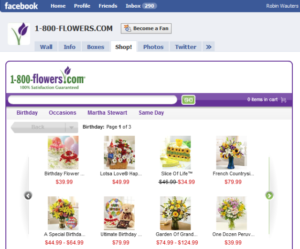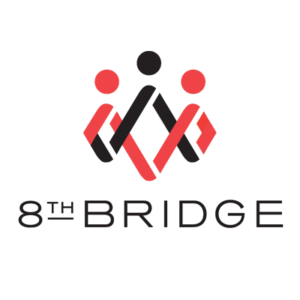Episode 13: How Not to Get Sued (Again)
Many in the Minnesota startup community are familiar with the startup 8thBridge. In particular, 2009 catapulted 8thBridge into the startup stratosphere locally and nationally. In that year alone, they launched the very first storefront ever on Facebook, won the biggest entrepreneurship competition in Minnesota, and raised $5M in a venture capital Series A Round. Except, 8thBridge didn’t do any of those things. Host hotlou reveals a poorly kept secret explaining why in a story that might help you learn how not to get sued.
Show notes
First, we would of course be remiss for not mentioning our Evergreen-powered sponsor, Dad Jokes Daily. To the right, in honor of episode 13, you’ll notice a “13th-themed” Dad Joke Daily post from a recent Friday the 12th. Take a second to LIKE the Page. Because if you don’t laugh at these jokes, you’re either (a) not a dad, or (b) hate humor.
Wikipedia Entry Challenge
If you made it to the end of the show, you know that we challenged a listener to create a Wikipedia entry for the hotlou show. If you’re up to the challenge, go create the entry, and then email me to claim victory in the challenge!
Alvenda Takes Social Media Monetization by Storm
After months and months of building what was — to be perfectly frank — a bit of a crappy platform, I hacked together some code thanks to inspiration provided by startup-induced sleep-deprivation. When it was done, I was staring at what would become the very first store ever on Facebook. It ultimately would become the 1-800-FLOWERS.COM Facebook store you see on this page that we launched on July 8, 2009.
What followed was your stereotypical startup cautionary tale of massive media success, followed by the valley of disillusionment, then repeat. Classic Hype Cycle. It was then, of course, punctuated with a lawsuit. Or the threat of one, at least.
RIP Alvenda
At Shop.org (the biggest retail conference of the year), we were approached by a ton of people thanking us for buying their tickets, without having any clue who they were. We were confused, but soon forgot about it. Not long after the conference, however, we got a letter from the lawyers at Venda (later acquired by NetSuite who was later acquired by Oracle).
Of course, that’s when we had to change our name. We initially chose “Algoogle” but soon learned there was a conflict there as well. At that point, we said goodbye forever to Alvenda and turned to our employees to suggest new names.
Nameless and Trailblazing
Given that we were now without a name, we turned to our roughly 40 employees for name ideas.
To be honest, everything sucked. And I abstained until I had something I thought would realistically be great for us.
It just so happened that our dilemma coincided with a few other exciting things happening both at our company and in the industry.
First, Facebook introduced the Open Graph: basically meta tags formatted so Facebook (and eventually other software companies, too) can better understand what is on your website.
Second, I hacked together some more code. This time, not only did it allow our customers to start publishing stores on Facebook’s News Feed and subsequently allow shopping on Facebook’s home page. It also published a store with one or more items every time a shopper clicked a Like Button on an e-commerce store’s product page.
Then, we built an analytics platform to track how these stores impacted shopping behavior. We called this platform Graphite.
And because we were at the forefront of leveraging the Open Graph, I turned to my old friend Graph Theory for name ideas.
Seven Bridges of Königsberg
Briefly, in Königsberg in Prussia (now Kaliningrad, Russia) a bunch of Russians (presumably drunk) were bragging they could cross the 7 bridges in town once and only once in a single walk. This became the Seven Bridges of Königsberg problem.
Leonhard Euler caught wind of this story and determined that it was provably impossible by transforming the bridges and land masses into a series of dots and lines. Later, this negative resolution became the foundation of Graph Theory.
8thBridge is Born and We Weren’t Sued Again
As it interested me and our dilemma, it turned out the problem was solvable by adding — you guessed it — an eighth bridge. And thus, 8thBridge was born.
I told the story to my co-founder, the executive team, our employees, and eventually to our customers and the response was exactly what we had all hoped we’d get out of a name: excitement.
Incidentally, 8thBridge.com now redirects to some squatter with a new aggregation website. Also, an asian-backed venture capital firm called 8thBridge Capital formed in supposedly 2013, a year before 8thBridge’s acquisition in April 2014.
Naming Guidelines (i.e. how not to get sued)
Here are the naming guidelines I like to share with people:
- Keep it short. That’s easier to remember.
- Keep it unambiguous. Remember, you’re not listening to the “Louisa” show today because of this.
- Own the digital footprint. Get the .com or .org if you can (or at least something close enough and memorable). This also helps you in how not to get sued.
- Have a story. Like the one above, stories remain with people for a long time and can often have a great impact.
- If possible, alphabetic superiority is super helpful — especially if you expect to be listed among your competitors.
And as Mike put it, phone book rules still apply. And, if it takes you more than 5 minutes to pick your lawn sign color, maybe you’re not cut out for running for office.
I think the same thing applies to business. Pick a name and run with it. You can change it if you have to. Hopefully, not because you’re being sued.
Our Like Button Shops
As another aside, it’s hard to imagine now, but take the button below. If you clicked on it, can you imagine your friends seeing a store in their News Feed? Where shoppers literally entered their credit card number on Facebook’s home page. Pretty bonkers.
Click on the Like Button below. I promise your friends won’t get a store in their News Feed. That’s the hack I put together, but obviously nothing like that is possible today.
Then, we built an analytics platform together called Graphite that tracked how users clicking these buttons would lead to their friends’ shopping behavior. That platform ultimately lead to our Series B for $10M and our acquisition.
It was a wild ride on the Hype Cycle.
Other Worthwhile Notes not about How Not to Get Sued
For those so inclined, check out Mike’s former political podcast: Wrong About Everything.
Welcome, celebrity listener Lou Ferrigno!
If anyone loves Labyrinth as much as me, you may want to skip this video as it may ruin some magic for you:
Watch Captain James T. Kirk cheat the The Kobayashi Maru Test:
One fun last side note, in the first year of Facebook (2004), my love for Graph Theory was at its height and I tried applying to work for Zuck. To apply, you had to solve graph theory problems and send the solutions to the jobs emails. I spent days working on several of them, only to learn later that several of them were unsolvable. The tech team was publishing problems they needed solved internally that they couldn’t solve on their own. Genius.
Thanks again to our sponsor Dad Jokes Daily!


